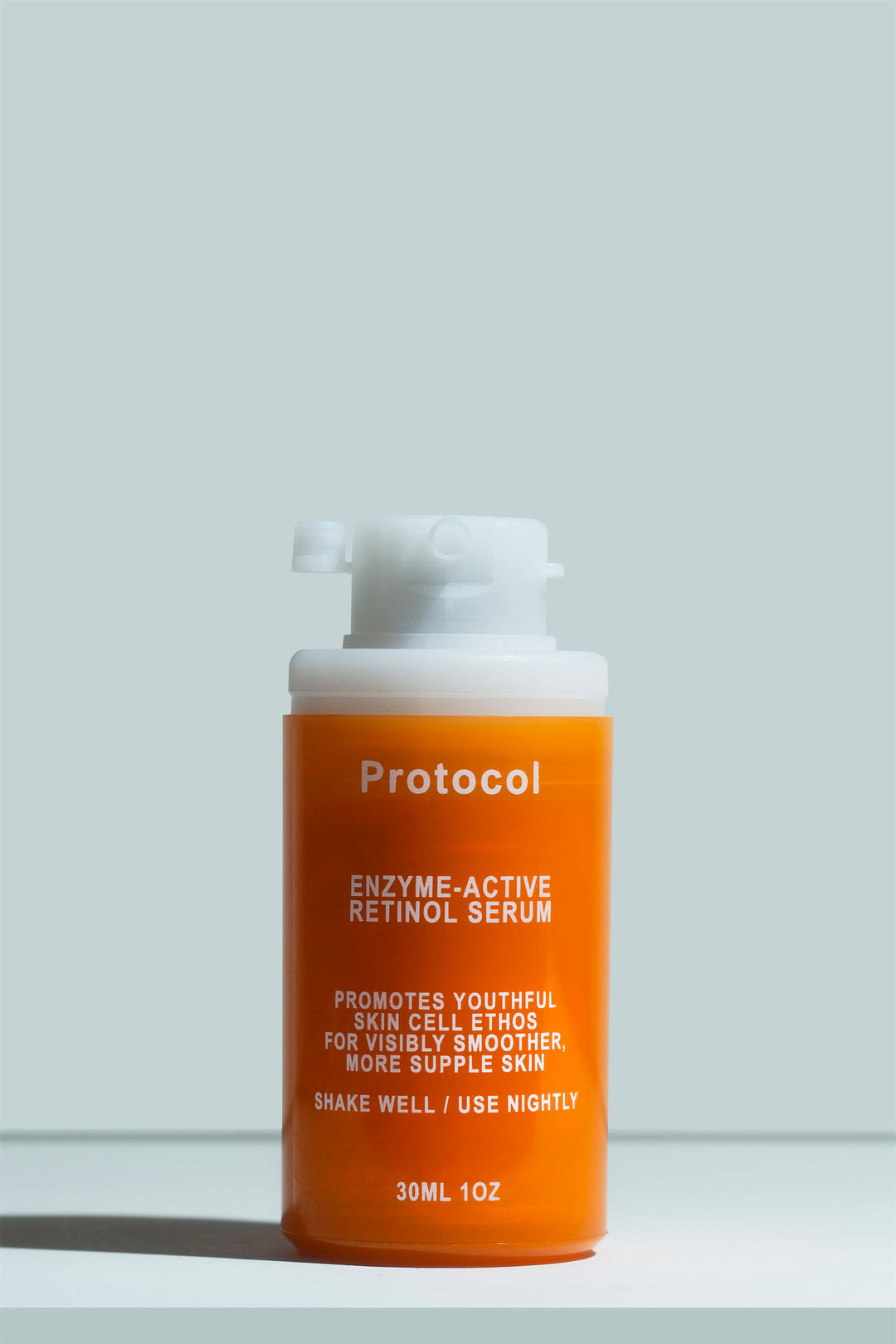Glycolic Acid and Retinol: A Shockingly Good Match

Glycolic acid and retinol are two of the strongest, most potent active ingredients you’ll find in non-prescription skincare. They renew the skin in slightly different ways, which is why it’s worth using both in your routine. That said, it’s also important to be cautious.
Discover the science behind how glycolic acid and retinol work together, and find out how to combine them in your own skincare routine.
Can you use glycolic acid and retinol at the same time?
Yes, you can use glycolic acid and retinol together! It’s perfectly fine to use both as long as the potency of your products and your frequency of use align with what your skin tolerates.
There are a lot of misconceptions about how to combine skincare ingredients. People often worry that a specific ingredient interaction could somehow lead to an especially horrible skincare reaction. The good news is that if a common skincare ingredient was able to do that, you can rest assured it wouldn’t be allowed on the market.
What can happen is some irritation or skin barrier damage from using ingredients combinations that are too strong for your skin. This can happen if you use resurfacing agents like glycolic acid and retinol too often in your routine.
But should you use glycolic acid and retinol together?
Once again, the answer is a resounding yes! When used together, glycolic acid and retinol help to repair and renew the skin thoroughly thanks to their different mechanisms of action.
Glycolic acid is the surface-level exfoliant. It’s an alpha hydroxy acid that breaks down the sticky intercellular substance that keeps inactive dead skin cells attached to the surface of the skin. This helps those cells fall off the skin evenly without disrupting any of the lower layers of the skin. This shedding has other benefits, like speeding the reduction of skin surface issues like fine lines, texture, discoloration, or blemishes.
Retinol works on a deeper level and isn’t technically an exfoliant (although it can lead to some peeling). It works by activating receptors in the skin in a way that triggers improved skin cell proliferation and differentiation. In other words, it makes skin cells multiply faster and helps them take on the right “roles.” This leads to deeper renewal of the lower layers of the skin, along with a reduction in wrinkles, improved skin texture, and overall prevention of signs of skin damage and aging.

Benefits of glycolic acid and retinol
Glycolic acid and retinol both offer the skin some impressive benefits, but combining them can amp up your results.
- Significantly improves skin cell turnover rate
- Faster fading of fine lines and wrinkles
- Increased dermal and epidermal thickness, but thinning of stratum corneum
- Visible reduction in scars and skin texture
- Improvement in skin tone and smoothness
- Reduces your chances of experiencing a skincare “plateau” thanks to different mechanisms of action
Science of using glycolic acid and retinoids
As far back as 1995, dermatologists were already recommending routines that combined retinoids and glycolic acid for everything from acne to signs of aging.
Studies so far show several benefits from the combination of ingredients. One study, looking at a cream made with retinol, lactose, and glycolic acid, found a significant impact on signs of photoaging within just 12 weeks.
A more recent study compared the use of a combined retinol and glycolic acid formula against rotational use of separate products. The researcher discovered that alternating the two formulas resulted in a significant reduction in wrinkles and other markers of photoaging, with consistent improvement over a year.
Finally, when it comes to retinaldehyde, a powerful, enzyme-active form of retinol, researchers found that combining it with glycolic acid increased its bioactivity. Despite that, it still didn’t cause the same level of irritation as prescription-strength retinoids. Finally, for patients experiencing acne, the combination proved gentle enough even when used alongside other acne treatments.
How to use glycolic acid and retinol together
Using glycolic acid and retinol together can be a little tricky, but ultimately, there are several ways to go about it:
- Use on alternate nights, applying your glycolic acid or retinol serum after cleansing and before moisturizing.
- You can also play around with frequency, for example using retinol two or three nights in a row, with glycolic acid in between.
- If your skin is quite hearty, you can use glycolic acid in the morning and retinol at night - just be very careful to use sunscreen consistently when using AHAs.
- With a glycolic acid cleanser, you can use retinol every night, and cleanse with the exfoliating face wash as often as needed.
- If your skin is extremely resilient, you might be able to use leave-on glycolic acid formulas and retinoids simultaneously. Apply your glycolic acid first to cleansed skin, and allow it at least 20-30 minutes to sink in completely before applying retinol. That said, we don’t recommend this approach, as it could easily cause over-exfoliation.
Can I mix glycolic acid and retinol?
While you can use glycolic acid and retinol together, do not mix the formulas. Retinol is quite unstable, so it must be formulated carefully to ensure it won’t degrade. Instead of ending up with a powerful retinol-glycolic acid hybrid, you’ll end up with a diluted formula or, even worse, an inactive retinoid.
Retinol and glycolic acid safety considerations
Keep your skin safe and avoid negative reactions with these additional safety considerations:
- Use sunscreen diligently in the mornings, since alpha hydroxy acids can increase the skin’s sensitivity to sun exposure.
- Only introduce one new product at a time, especially if you’re new to chemical exfoliants and retinoids.
- To start, only use your product once every few days before building up to daily use or alternate nights.
- Pay attention to your skin, and discontinue use if you notice significant redness, tenderness, or peeling.
- Only introduce your second product, whether it’s glycolic acid or retinol, once you know that your skin is reacting well to the first active.
- If you notice mild redness or flaking, you can reduce your frequency of using actives instead of stopping altogether.
- Keep this same process in mind even if you decide to introduce more active skincare ingredients.
How we simplified the combination at Protocol
The Protocol Skincare range is designed to make the most out of this winning skin-renewing pair. We wanted to find that glycolic acid and retinol sweet spot that transforms your skin while keeping your routine streamlined, and without compromising sensitive skin. Achieving that balance with leave-on glycolic acid and retinol can be difficult.
So what did we do?
The solution was pretty simple. We introduced gentle exfoliation with our Double AHA Cleanser. With 5% glycolic acid and 2% lactic acid, it’s a gentle dose of exfoliating acids made even gentler by the cleanser format. Instead of leaving the acids on your skin, you rinse them off like a quick and controlled peel.
This paves the way for our powerful Enzyme-Active Retinol Serum to stimulate renewal from below. Without any acid residue on your skin, you can rest assured that the retinaldehyde will penetrate deeply and retain its full impact.




